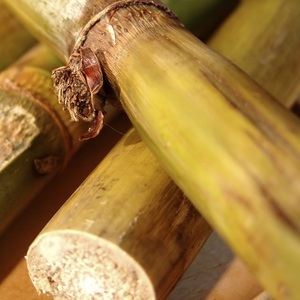UNICA: Ethanol sales down slightly in early July

August 5, 2021
BY Erin Krueger
UNICA, the Brazilian sugarcane industry association, has announced that anhydrous ethanol production continued to grow in the first half of July, expanding more than 30 percent when compared to the previous year. Ethanol sales were down slightly.
According to UNICA, mills in the south-central region of Brazil processed 45.65 million metric tons of sugarcane during the first half of July, down 2.37 percent when compared to the same period of last year. A total of 256.75 million metric tons of sugarcane have been processed since the beginning of the current harvest season, which began April 1, down 7.36 percent when compared to the same period of 2020.
Advertisement
Ethanol production was at 2.16 billion liters (570.62 million gallons) for the first half of July. Anhydrous ethanol production reached 889 million liters, up 32 percent, while hydrous ethanol production fell to 1.27 billion liters, down 13.03 percent. Corn ethanol accounted for 129.95 million liters of the total volume produced.
Since the beginning of the current season, ethanol production has reached 11.81 million liters, including 7.5 billion liters of hydrous ethanol and 4.31 billion liters of anhydrous ethanol. Corn ethanol production was at 815.61 million liters.
Mills in the south-central region of Brazil sold 1.19 billion liters of ethanol during the first half of July, down 1.2 percent when compared to the same period of last year. Of that volume 1.17 billion liters were sold domestically and 18.42 million liters were destined for export.
Advertisement
Domestically, sales of hydrous ethanol reached 701.17 million liters during the first half of July, down 6.79 percent when compared to the same period of last year. Sales of anhydrous ethanol reached 468.31 million liters, up 26.95 percent.
Sales since the beginning of the current harvest season are at 8.29 billion liters, up 8.53 percent when compared to the same period of 2020. That volume includes 7.86 billion liters sold domestically, up 11.19 percent, and 433.52 million liters destined for export, down 17.42 percent.
Related Stories
Neste and DHL Express have strengthened their collaboration with the supply of 7,400 tons (9.5 million liters) of neat, i.e. unblended, Neste MY Sustainable Aviation Fuel to DHL Express at Singapore Changi Airport starting July 2025.
CoBank’s latest quarterly research report, released July 10, highlights current uncertainty around the implementation of three biofuel policies, RFS RVOs, small refinery exemptions (SREs) and the 45Z clean fuels production tax credit.
The USDA significantly increased its estimate for 2025-’26 soybean oil use in biofuel production in its latest World Agricultural Supply and Demand Estimates report, released July 11. The outlook for soybean production was revised down.
The U.S. Energy Information Administration maintained its forecast for 2025 and 2026 biodiesel, renewable diesel and sustainable aviation fuel (SAF) production in its latest Short-Term Energy Outlook, released July 8.
XCF Global Inc. on July 10 shared its strategic plan to invest close to $1 billion in developing a network of SAF production facilities, expanding its U.S. footprint, and advancing its international growth strategy.
Upcoming Events










